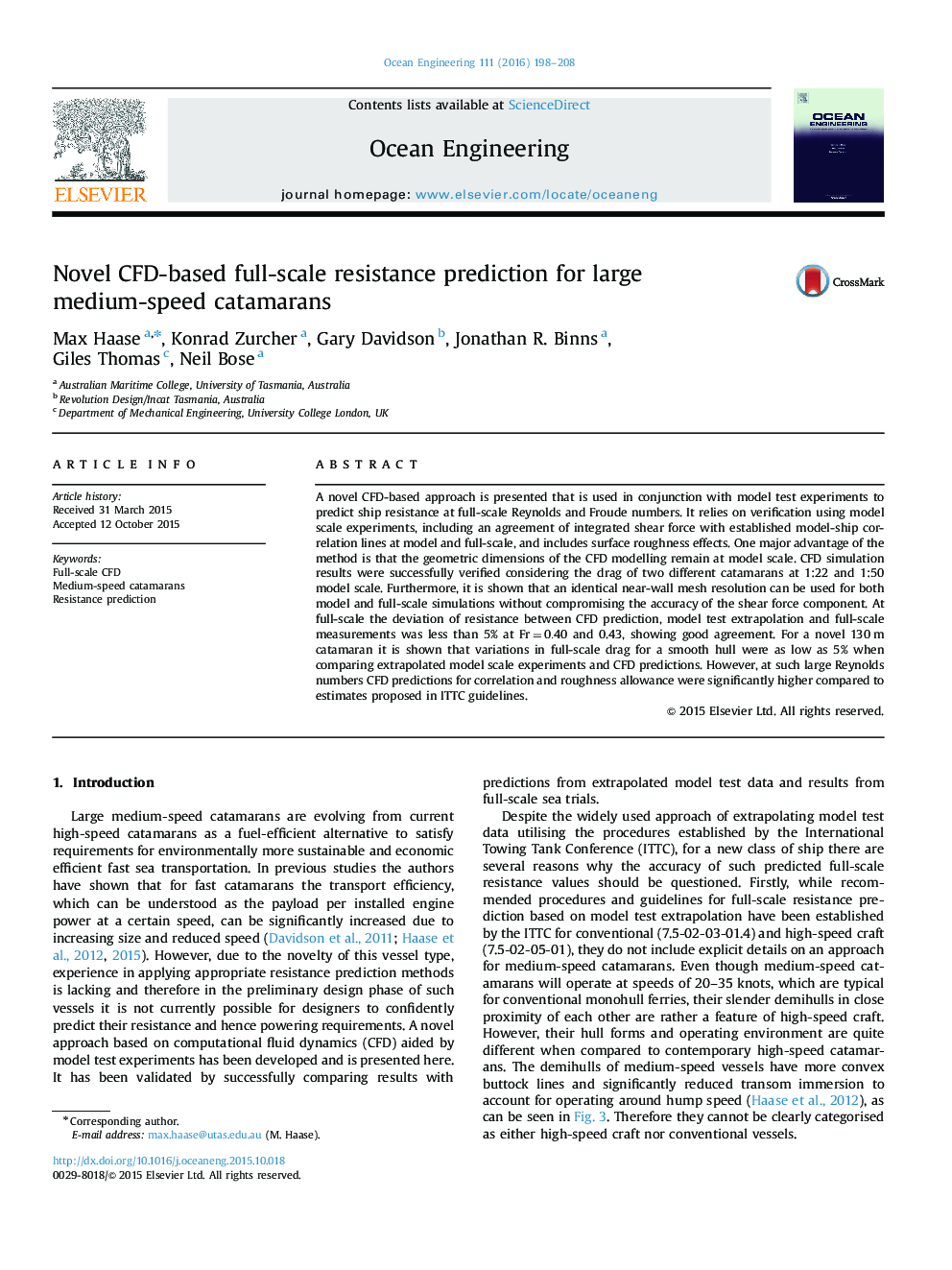| Article ID | Journal | Published Year | Pages | File Type |
|---|---|---|---|---|
| 8065061 | Ocean Engineering | 2016 | 11 Pages |
Abstract
A novel CFD-based approach is presented that is used in conjunction with model test experiments to predict ship resistance at full-scale Reynolds and Froude numbers. It relies on verification using model scale experiments, including an agreement of integrated shear force with established model-ship correlation lines at model and full-scale, and includes surface roughness effects. One major advantage of the method is that the geometric dimensions of the CFD modelling remain at model scale. CFD simulation results were successfully verified considering the drag of two different catamarans at 1:22 and 1:50 model scale. Furthermore, it is shown that an identical near-wall mesh resolution can be used for both model and full-scale simulations without compromising the accuracy of the shear force component. At full-scale the deviation of resistance between CFD prediction, model test extrapolation and full-scale measurements was less than 5% at Fr=0.40 and 0.43, showing good agreement. For a novel 130Â m catamaran it is shown that variations in full-scale drag for a smooth hull were as low as 5% when comparing extrapolated model scale experiments and CFD predictions. However, at such large Reynolds numbers CFD predictions for correlation and roughness allowance were significantly higher compared to estimates proposed in ITTC guidelines.
Related Topics
Physical Sciences and Engineering
Engineering
Ocean Engineering
Authors
Max Haase, Konrad Zurcher, Gary Davidson, Jonathan R. Binns, Giles Thomas, Neil Bose,
